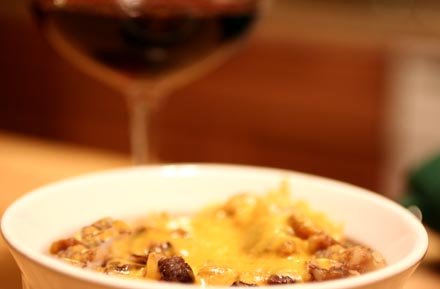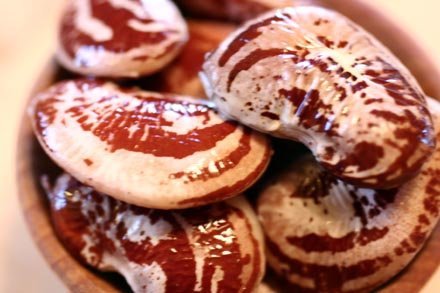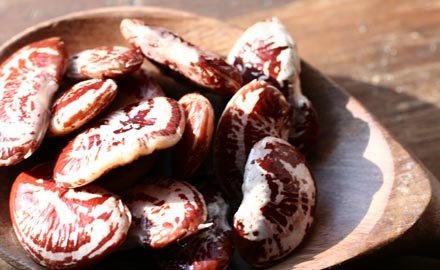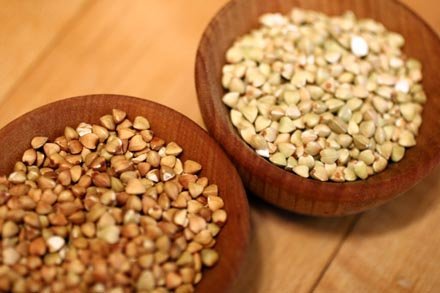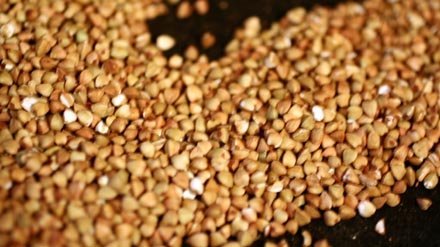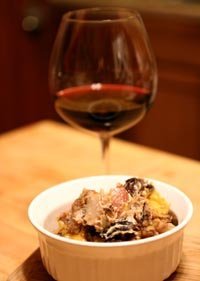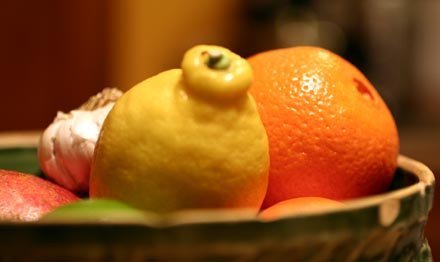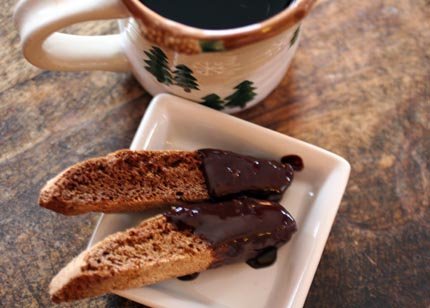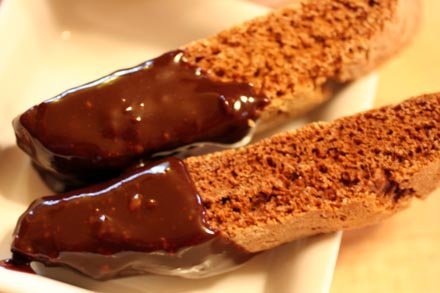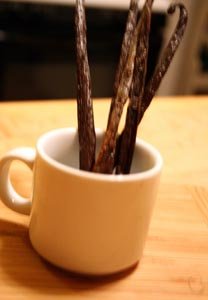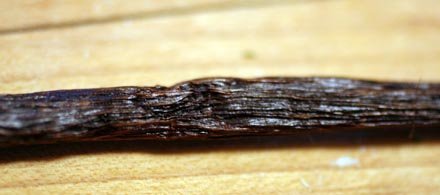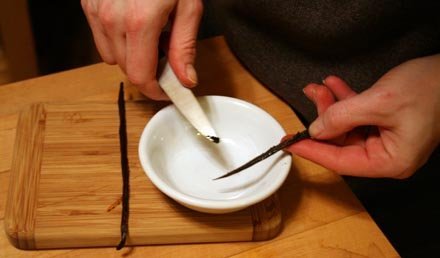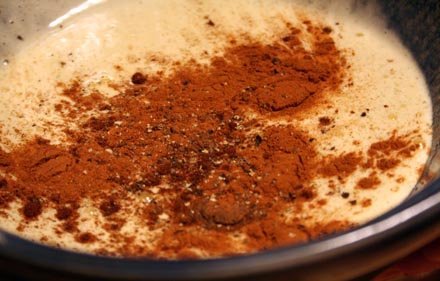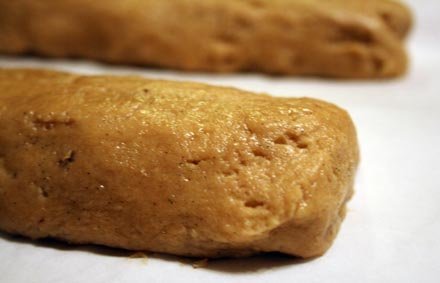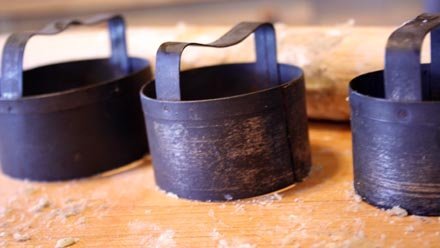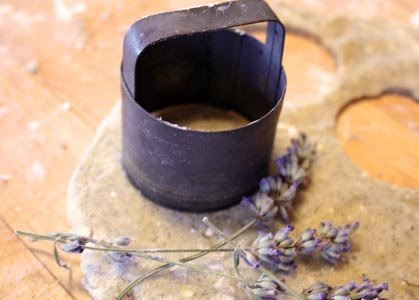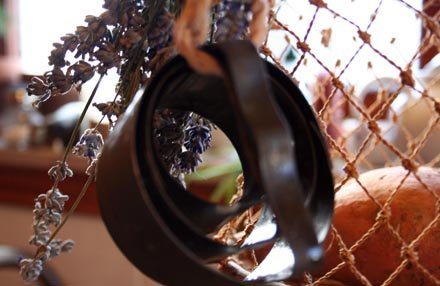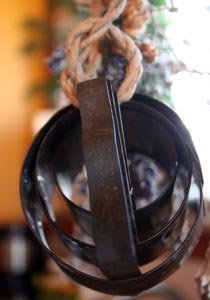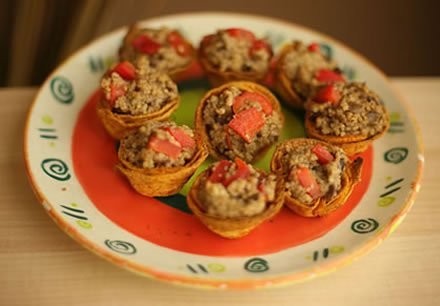(Vegetarian, gluten-free)
Do you remember Buckwheats? The cereal by GM was the taste of my childhood – on a good day, when store-bought breakfast cereal was allowed. The flakes were thick and crusted with a honey and maple glaze, sweet enough to satisfy a kid yet bearing enough resemblance to something that actually belonged in one of the food groups that my parents didn’t ban it outright. It was like catnip for kids.
Well, this recipe bears no resemblance. Don’t let the “buckwheat” in the title delude you. Like the cereal though, this dish has enough good stuff to be healthy and enough bad stuff to taste good. And it was an utter exercise in cleaning out the pantry, one of those sort of happy accidents. I say sort of because at first I even wondered if I could pull it together. All I knew when I started out was that I wanted to eat a nutty grain that came steaming and bubbling out of the oven. Found buckwheat groats in the cupboard, and I started tossing things in from there, trying hard to build and then enhance some distinctive flavor. This dish was sloppy, haphazard, and it almost sunk. But don’t knock it till you try it.
Now if only the weather would help me out. I’m a winter bird living in the single balmy spot in the country besides Phoenix. The world is covered in snow, or at least the contiguous US and most of Canada. My sister-in-law in Seattle took her kids sledding down Queen Anne Hill (some people were doing it on sofas). All my local friends found themselves snowed in in strange towns and cities over the course of their holiday travels. Gilda, who commented on the last post, signed off somewhat woefully from “cold, windy London Ontario Canada”. As Napolean Dynamite says, Luckeee… And then there’s the East Coast. And Chicago. And Minnesota. Probably California…
All I want is a little snow. A little sign that winter is alive and well or at least putting up a good fight against global warming’s steady march. It’s trying, I know. I can hear winter, wailing behind the gusts of wind that are shredding what’s left of our leaves as warm air smacks into cold air somewhere other than here. So I have to settle for a little winter food, in the absence of the real thing. And for those of you who are getting snowed upon, this will warm your insides nicely.
This was almost a lost opportunity. Those of you who know heirlooms must have been wondering when I was going to call in the Christmas Lima. I’d actually forgotten that I had them. With their creamy, snowy color and their cranberry splashes, it’s easy to imagine what inspired the name. They look like something I’d hang on my tree. They’re huge as beans go, nearly half-dollar sized once they’re soaked. Here’s a bit of trivia, in case it ever comes up: it takes only 25 Christmas Limas to make an ounce (most other dry beans take about 80 to an ounce).
According to Seed Saver’s Exchange, the Christmas Lima dates back to around 1840. Like other limas, it’s buttery and nutty. Almost like chestnuts, which might also explain the name.
The Recipe
Buckwheat groats need to be toasted before they’re cooked, otherwise they have a bitter taste rather than a rich, nutty one. You can do this yourself by heating a dry skillet on high. When it’s hot, add 6 ounces of buckwheat groats and let them toast for a few minutes, until they begin turning golden. Then add one beaten egg to the skillet, stir well to coat the groats, and let toast another 5-6 minutes, until they are deep brown. The egg keeps the groats from getting mushy when they’re cooked.
When you’re done, they should look like the photo here (greenish-white is before, the walnut shade is after of course). And if you don’t feel like doing this, buy kasha instead of buckwheat groats. Kasha is already toasted, though it’s not always easy to find.
Also, I know the wine-pairing wisdom tells me otherwise, but I really like this dish with a hearty, full-bodied red wine, like a Zin, or perhaps a Bordeaux full of barnyard. The nuttiness and full mouthfeel of the dish is a good match for the wine, and it can certainly stand up to the higher alcohol content in a Zinfandel.
Cheesy Buckwheat Winter Casserole with Christmas Lima Beans
1 ½ cups vegetable stock
I cup toasted buckwheat groats (see method, above)
1 bay leaf
1 large onion
4 cloves garlic
2 tablespoons butter
1 large potato, with skin, diced
2 turnips, diced
1 carrot
1 ½ cups baby portabella mushrooms
splash of olive oil
1 tablespoon fresh rosemary
2 teaspoons fresh thyme (you can substitute dried – just use less. And you might throw in a dash of dried anyway to enhance the greener flavor in the fresh herbs)
1 cup cooked Christmas Lima beans
½ cup red wine
salt
fresh ground pepper
1/2 cup sour cream
½ cup goat cheese (or use another half cup of sour cream)
2/3 cup sharp cheddar cheese, grated
In a pot, bring vegetable stock to a boil. Reduce to simmer, add bay leaf and toasted buckwheat groats and cook on medium low heat until water has been absorbed, about 15 minutes. Remove the bay leaf.
In a large skillet, melt the butter. Add diced onion and minced garlic and cook until they are just beginning to turn pale, about 2 minutes. Add the potato, turnips, carrot, mushrooms and the rosemary and thyme. Add just enough olive oil to lightly coat all the vegetables and cook until the veggies are tender-crisp, about 10 minutes. Stir in the Christmas Lima beans and the cooked buckwheat. Add salt and pepper to taste.
Preheat oven to 375. Place the mixture into a large casserole dish and place in oven, uncovered, for about 20 minutes, until veggies have begun to roast. Stir in the red wine and cover and cook another 15 minutes. Stir the sour cream/goat cheese and the cheddar cheese into the mixture, reserving enough shredded cheddar to sprinkle on top. Return to oven and let cook until the cheddar cheese is bubbling and browning, about 6 minutes. Serve as hot as you can take it while the snow swirls in the wind outside your window.
(You’re right. The bowl of fruit has nothing to do with this recipe. I was just playing around with the new camera lens that Simon gave me for Christmas. You might have noticed that several of the images in this post are blurred out at the edges – more so than is artistically desirable. I’m just learning my way around the lens, with its very precise depth of field…)

